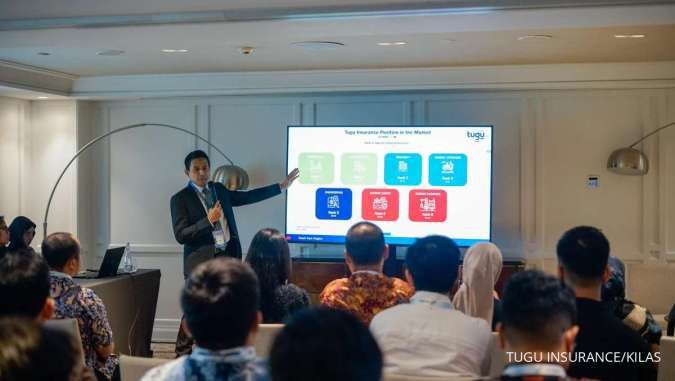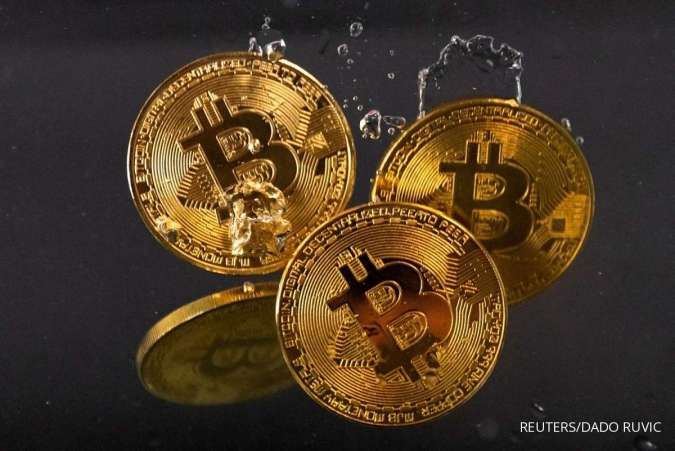KONTAN.CO.ID - WASHINGTON. The Federal Reserve kept interest rates unchanged on Wednesday but signaled in new economic projections that borrowing costs will likely rise by another half of a percentage point by the end of this year as the U.S. central bank reacted to a stronger-than-expected economy and a slower decline in inflation. In an effort to balance risks to the economy with a still unresolved fight to control inflation, "holding the target (interest rate) range steady at this meeting allows the committee to assess additional information and its implications for monetary policy," the rate-setting Federal Open Market Committee (FOMC) said in a unanimous policy statement issued at the end of its latest two-day meeting. Further rate increases would "take into account the cumulative tightening of monetary policy, the lags with which monetary policy affects economic activity and inflation, and economic and financial developments," it said.
Speaking after the release of the Fed statement, Fed Chairman Jerome Powell noted that as the Fed has paused rates, "we’ve covered a lot of ground and the full effects of our tightening have yet to be felt." Powell added nearly all Fed officials expect more rate rises this year, and he noted that even as officials have not decided what they will do with rates at coming meetings, the July FOMC gathering is a "live meeting" which could bring another rate increase.
Read Also: US Producer Prices Fall on Declining Energy, Food Costs The Fed's new projections, adding a hawkish tilt to Wednesday's interest rate decision, show policymakers at the median see the benchmark overnight interest rate rising from the current 5.00%-5.25% range to a 5.50%-5.75% range by the end of the year. Half of the 18 Fed officials penciled in their "dot" at that level, with three seeing the policy rate moving even higher - including one official who sees it rising above 6%. Two Fed officials see rates staying where they are, and four see a single additional quarter-percentage-point increase as likely appropriate. Policymakers, however, anticipate 100 basis points of rate cuts in 2024, alongside fast-falling inflation. Combined, the rate outlook and the projections are likely to lead investors to expect a resumption of quarter-percentage-point rate increases beginning at the next policy meeting in July, which Powell suggested is possible as the Fed sets rate policy meeting by meeting. U.S. stocks fell after the decision and traders of futures contracts tied to the policy rate newly reflect about a 75% chance of another rate hike next month, with the probability of a rate cut by the end of the year dropping. "It does seem as if the FOMC members have become even more hawkish since the last meeting, and I think that has taken investors by surprise," said Sam Stovall, chief investment strategist at SFRA Research.
Read Also: US Consumer Prices Slow in May; Core Inflation Sticky STRONGER ECONOMIC OUTLOOK The higher rate outlook coincides with an improved view of the economy and, consequently, slower progress in returning inflation to the central bank's 2% target. Fed officials at the median more than doubled their outlook for 2023 economic growth to 1%, from 0.4% in the March projections, and now see the unemployment rate rising only to 4.1% by the end of the year compared to 4.5% in the March outlook.
The jobless rate as of May was 3.7%. The stronger-than-expected economy means inflation will fall more slowly, with the core Personal Consumption Expenditures Price Index dropping from the current 4.7% to 3.9% by the end of 2023, compared to a 3.6% year-end rate seen in the March policymaker projections. The decision snapped a string of 10 consecutive rate hikes delivered as the Fed responded to the worst outbreak of inflation in 40 years with a matching set of aggressive policy moves, including four outsized increases of three-quarters of a percentage point last year. The central bank's policy rate, which influences household and business borrowing costs throughout the economy, rose a full 5 percentage points from the onset of the tightening cycle in March 2022, reaching the highest level since just before the start of the 2007-2009 recession.






